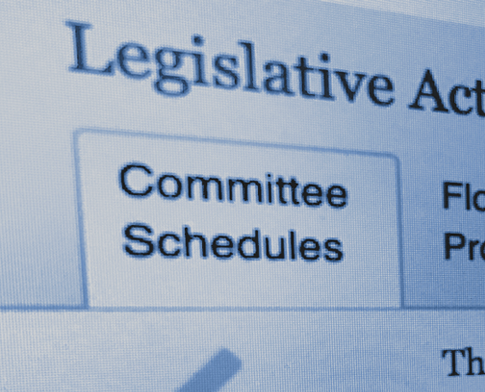Trade Update (November 30)
| US-Mexico-Canada Agreement (USMCA)
President Donald Trump, Mexican President Enrique Peña Nieto, and Canadian Prime Minister Justin Trudeau signed the USMCA in Buenos Aires on Friday (Nov 30). All three leaders are in Argentina for the G-20 summit.
The signing was largely ceremonial as the three countries still need to ratify the agreement before it enters into force. After the signing, PM Trudeau remarked, “[USMCA] lifts the risk of serious economic uncertainty that lingers through a trade renegotiation process.” He continued by saying there is more work to be done and turned to President Trump and said, “and it’s all the more reason why we need to keep working to remove the tariffs on steel and aluminum between our countries.”[1]
Friday (Nov 30) is Mexican President Peña Nieto’s last day in office. The newly elected president, Andrés Manuel López Obrador, will be sworn into office on Saturday (Dec 1). Analysts expect the deal to easily pass in Mexico and Canada, despite PM Trudeau’s reservations. However, the USMCA will face some opposition in the US. US Trade Representative Robert Lighthizer worked to ensure Democratic-backed provisions were included in the agreement, such as requiring that 40% of cars need to be made by auto workers making at least $16 per hour and requiring that Mexico encourage independent unions to improve wages and working conditions for their workers. However, Democrats worry that the agreement does not do enough to protect the environment, encourage companies to continue production in the US, enforce labor reforms in Mexico, and bring down the price of biologics and other drugs. Republicans are more supportive of the agreement but want to remove the Section 232 steel and aluminum tariffs before ratifying the agreement. Under the Trade Promotion Authority (TPA) act, Congress must give a yes-or-no vote. However, there are ways to bypass that requirement. For example, to provide more ‘teeth’ to the Mexican labor law requirements, Democrats could pressure President Trump to negotiate a side letter to accompany the deal.[2]
US-China Relations
While at the G-20 summit, President Trump will have dinner with Chinese President Xi-Jinping on Saturday (Dec 1). Chinese Foreign Ministry spokesman Geng Shuang said, “At present both countries economic teams are maintaining close contact to put into effect the spirit of the consensus reached by the two leaders in their telephone call on November 1. We hope the US can show sincerity and meet China halfway, to promote a proposal that both countries can accept.” USTR Lighthizer is also hopeful the dinner will be successful. Peter Navarro, one of President Trump’s trade advisors and advocates for an aggressive stance against China, will also attend the dinner.[3]
The most recent tariffs targeting China took effect on September 24, 2018. Those duties affected $200 billion of Chinese goods and are set to increase from 10% to 25% on January 1, 2019. In total, the US has levied tariffs on $253 billion of Chinese goods. China has retaliated in the tit-for-tat trade war and has levied tariffs on $113 billion of US goods.
ZTE Corp, a Chinese telecommunications company that violated US trade sanctions by illegally shipping products to Iran and North Korea, is under fire again. In April, the Commerce Department forbid American firms from exporting to ZTE for seven years, fined ZTE $1.19 billion, and ZTE promised to punish the employees that shipped equipment to Iran and North Korea.[4] However, in July, despite strong bipartisan opposition from Congress, President Trump lifted the export ban. This allowed ZTE to continue its operations and permitted limited transfer of funds to or from ZTE.[5]
This week, Senators Chris Van Hollen (D-MD) and Marco Rubio (R-FL) sent a letter to the US Secretaries of State, Treasury, and Commerce, asking them to investigate whether ZTE “violated US export controls and sanctions laws, as well as the terms of the Commerce Department’s June 2018 superseding settlement agreement.” A Reuters investigation found that ZTE “used US components unlawfully or helped Venezuela’s government flout democratic processes or human rights” by building a database to monitor its citizens’ behavior.[6]
Section 232 Reviews
A group of bipartisan senators sent a letter to the Comptroller General, Gene L. Dodaro of the Government Accountability Office (GAO), requesting he review how the Commerce Department handles 232 exclusion requests. They highlight eight specific questions including: how Commerce incorporates feedback into their decision, the overall cost of the exclusion process, what degree of technical support Commerce can provide to petitioners, and what steps they have taken to improve the pace of the exclusion process.
Last week (Nov 21), the World Trade Organization’s (WTO) Dispute Settlement Body (DSB) agreed to examine the Section 232 tariffs imposed by the US on seven member countries. The seven countries are China, the European Union, Canada, Mexico, Norway, Russia, and Turkey. They argue “the US measures, allegedly taken for national security reasons, were, in herie content and substance, safeguard measures taken to protect the US steel and aluminum industries from the economic effects of imports.” The DSB will establish seven panels to review each case individually.
In the same meeting, the DSB also agreed to examine four of the US’s requests that China, Canada, the European Union, and Mexico imposed countermeasures in response to the Section 232 tariffs. The US claim the Section 232 tariffs “were necessary for the protection of its essential security interests given the key role steel and aluminium plays in US national defence; these measures were therefore justified under Article XXI of the GATT and not subject to review by a WTO panel.” The DSB will establish four panels to review each case individually[7]
2019 House Calendar
The incoming House Democratic leadership team has released the 2019 legislative work schedule. The House schedule for the first session of the 116th Congress can be viewed here.
References
[1] Bill Chappell. “USMCA: Trump Signs New Trade Agreement With Mexico And Canada To Replace NAFTA.” NPR, 30 Nov 2018. https://www.npr.org/2018/11/30/672150010/usmca-trump-signs-new-trade-agreement-with-mexico-and-canada
[2] Paul Wiseman. “Trump’s New NAFTA Faces Skeptics in Now-Democrat-led House.” AgWeb, Associated Press, 29 Nov 2018. https://www.agweb.com/article/trumps-new-nafta-faces-skeptics-in-now–democrat-led-house/
[3] Ben Blanchard & Adam Jourdan. “China hopes US shows sincerity at G20 trade talks.” Reuters, 29 Nov 2018. https://www.reuters.com/article/us-g20-argentina-china/china-hopes-u-s-shows-sincerity-at-g20-trade-talks-idUSKCN1NZ032
[4] David J. Lynch. “US Companies banned from selling to China’s ZTE telecom maker.” The Washington Post, 16 Apr, 2018. https://www.washingtonpost.com/news/business/wp/2018/04/16/u-s-companies-banned-from-selling-to-chinas-zte-telecom-maker/?noredirect=on&utm_term=.2a269325070d
[5] Karen Freifeld & Sijia Jiang. “ZTE given temporary reprieve from US; removes more executives.” Reuters, 3 July 2018. https://www.reuters.com/article/us-usa-trade-china-zte/zte-given-temporary-reprieve-from-u-s-removes-more-executives-idUSKBN1JT2SD
[6] Angus Berwick. “Exclusive: US Senators ask White House to probe ZTE work in Venezuela.” Reuters, 28 Nov 2018. https://www.vanhollen.senate.gov/imo/media/doc/Venezuela%20ZTE.pdf
[7] “Panels established to review US steel and aluminum tariffs, countermeasures on US imports.” The World Trade Organization, Dispute Settlement, 21 Nov. 2018. https://www.wto.org/english/news_e/news18_e/dsb_19nov18_e.htm
|
HOUSE.GOV
The Week Ahead
For the main events of the next week and more, go straight to the key events on the house.gov website.
SENATE.GOV
The Week Ahead
For the main events of the next week and more, go straight to the key events on the senate.gov website.


